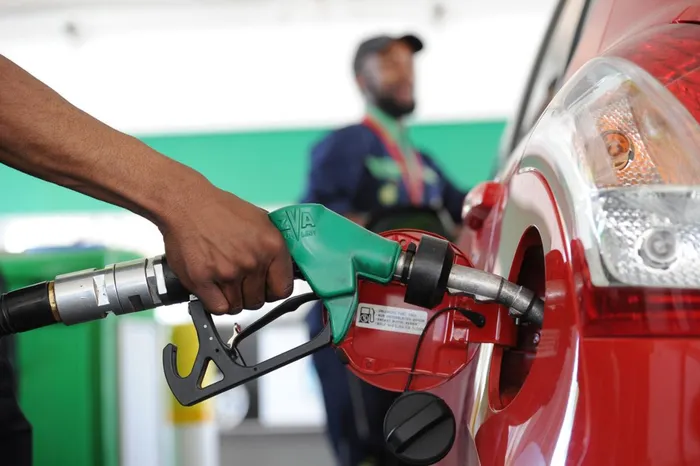Economists still expect rate cut despite inflation rising to 1-year high
CONSUMER PRICES

Stats SA chief director of price statistics, Patrick Kelly, said the latest increase was driven largely by transport, recreation and culture, alcoholic beverages and tobacco, as well as housing, food and non-alcoholic beverages.
Image: Karen Sandison / Independent Media
Economists remain optimistic that the South African Reserve Bank (Sarb) will cut interest rates from 7.00% to 6.75% per annum when the Monetary Policy Committee (MPC) meets on Thursday, despite consumer inflation rising to its highest level in more than a year.
Data from Statistics South Africa (Stats SA) on Wednesday showed that annual headline consumer inflation rate accelerated for the second month in a row to 3.6% in October, from 3.4% in September.
Though this inflation reading was below analysts' estimates of 3.7%, it was the highest inflation print since September 2024 when the rate was 3.8%.
Stats SA chief director of price statistics, Patrick Kelly, said the latest increase was driven largely by transport, recreation and culture, alcoholic beverages and tobacco, as well as housing, food and non-alcoholic beverages.
“The annual rate for transport turned positive following 13 months of deflation, rising from 0.1% in September to 1.5% in October. Fuel prices increased by 0.1% between September and October, with diesel declining by 0.7% and petrol rising by 0.2%. This took the annual rate for fuel to 3.3%, the first positive reading since August 2024,” Kelly said.
“Samp and maize meal recorded double-digit inflation in October, with maize meal reaching a four-month high at 10.7%. Interestingly, factory gate prices for maize meal, as measured in the September Producer Price Index, recorded an annual decrease of 3.8%.”
The core inflation rate, which excludes food, non-alcoholic beverages, fuel, and energy, eased to 3.1% in October from a seven-month high of 3.2% in September.
On a monthly basis, inflation edged up by 0.1%, following a 0.2% increase in September.
FNB economist Koketso Mano said they forecast headline inflation to move relatively sideways over the next few months.
Mano said inflation could average 0.1% month-on-month in November and 3.7% year-on-year, supported by higher food and non-alcoholic beverages inflation, while changes in core inflation should be marginal and fuel inflation softens.
“Ultimately, headline inflation should remain below 4% over the next year, remaining well within the tolerance band before softening towards 3% over the medium term,” Mano said.
“Core goods inflation should remain soft over the near term, supported by a stronger rand as well as favourable import shifts from a price perspective. This will compensate for normalising services inflation, which should keep the overall core number around 3%.
“While external trade dynamics suggest that goods inflation could surprise on the downside, services inflation, which could be considered the core within core, of around 4%, as well as sticky administered price inflation could keep the MPC conservative.”
However, forward-rate agreements currently indicate a 72% probability of a 25 basis-point reduction.
Recently, finance minister Enoch Godongwana endorsed a 3% inflation target with a tolerance band of 1 percentage point, thereby providing political support to the Sarb.
This adjustment replaces the previous target range of 3% to 6%, which had been maintained for the past 25 years.
Godongwana acknowledged the potential challenges involved, noting that the short-term fiscal costs such as reduced nominal GDP and slower revenue growth could complicate achieving fiscal objectives.
Nevertheless, he emphasized that the long-term benefits are expected to surpass these initial hurdles.
Mark Phillips, head of portfolio management and analytics at PPS Investments, said a lower target is anticipated to reduce both inflation expectations and actual inflation rates over time, allowing for the possibility of lower interest rates in the future.
“The Reserve Bank’s initiative to revise the inflation target has contributed to significant gains in South African bonds and currency performance, amid favourable conditions for other emerging markets and rising gold and platinum prices, important export commodities for the country,” Philipps said.
Nedbank economist Busisiswe Nkonki concurred, saying that they were expecting inflation to trend higher off a low base, ending the year just below 4%, mainly due to upward pressure from food as meat prices remain high due to the lingering impact of foot-and-mouth disease and the delay in vaccinations.
Nkonki said that overall, they were expecting inflation to average 3.2% in 2025 and 3.6% in 2026, before gradually moderating to around 3% in 2027.
“That said, the inflation outlook remains broadly subdued. As a result, we believe there is room for a 25 basis points rate cut tomorrow to bring the real rate closer to neutral,” she said.
BUSINESS REPORT